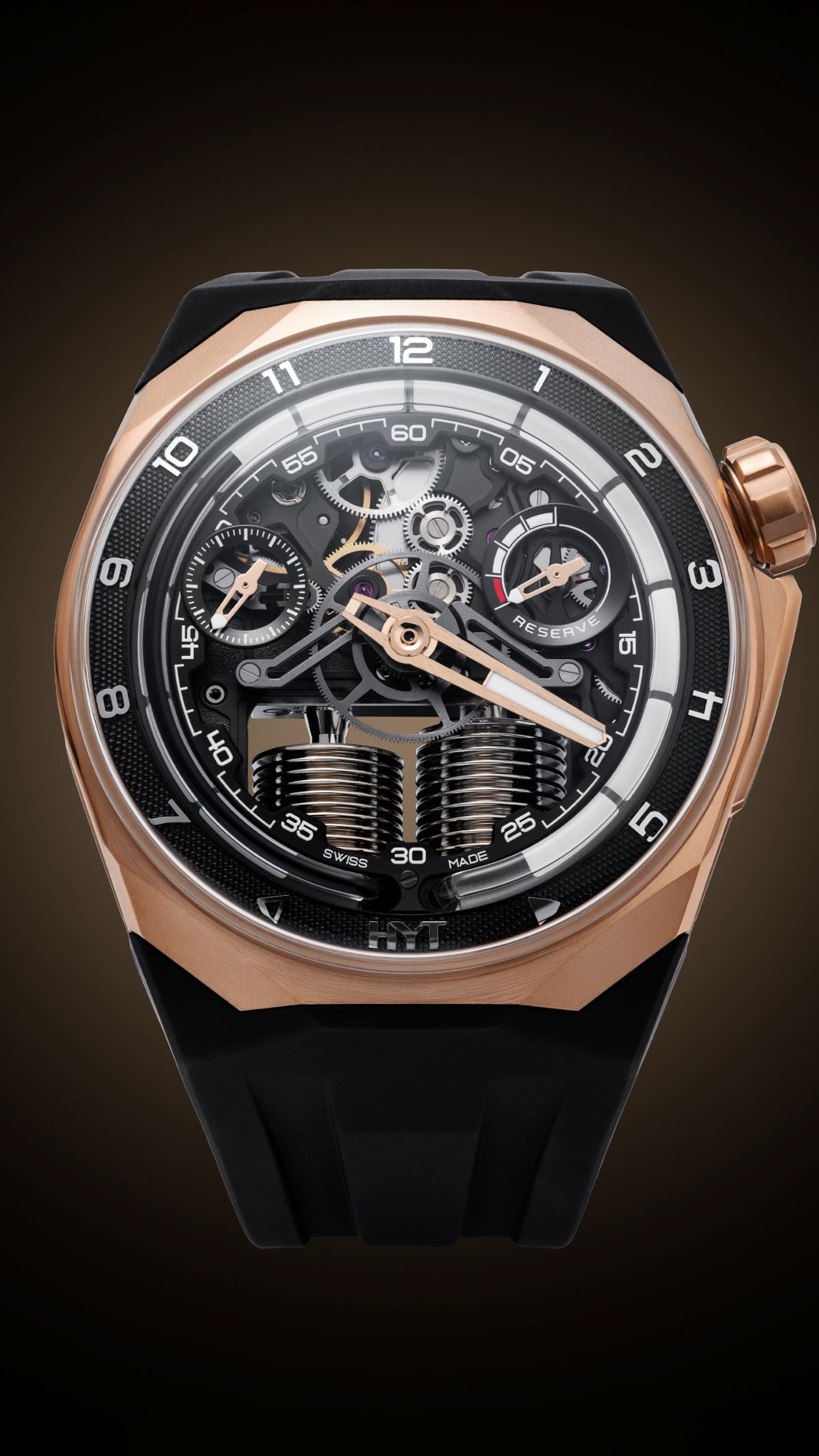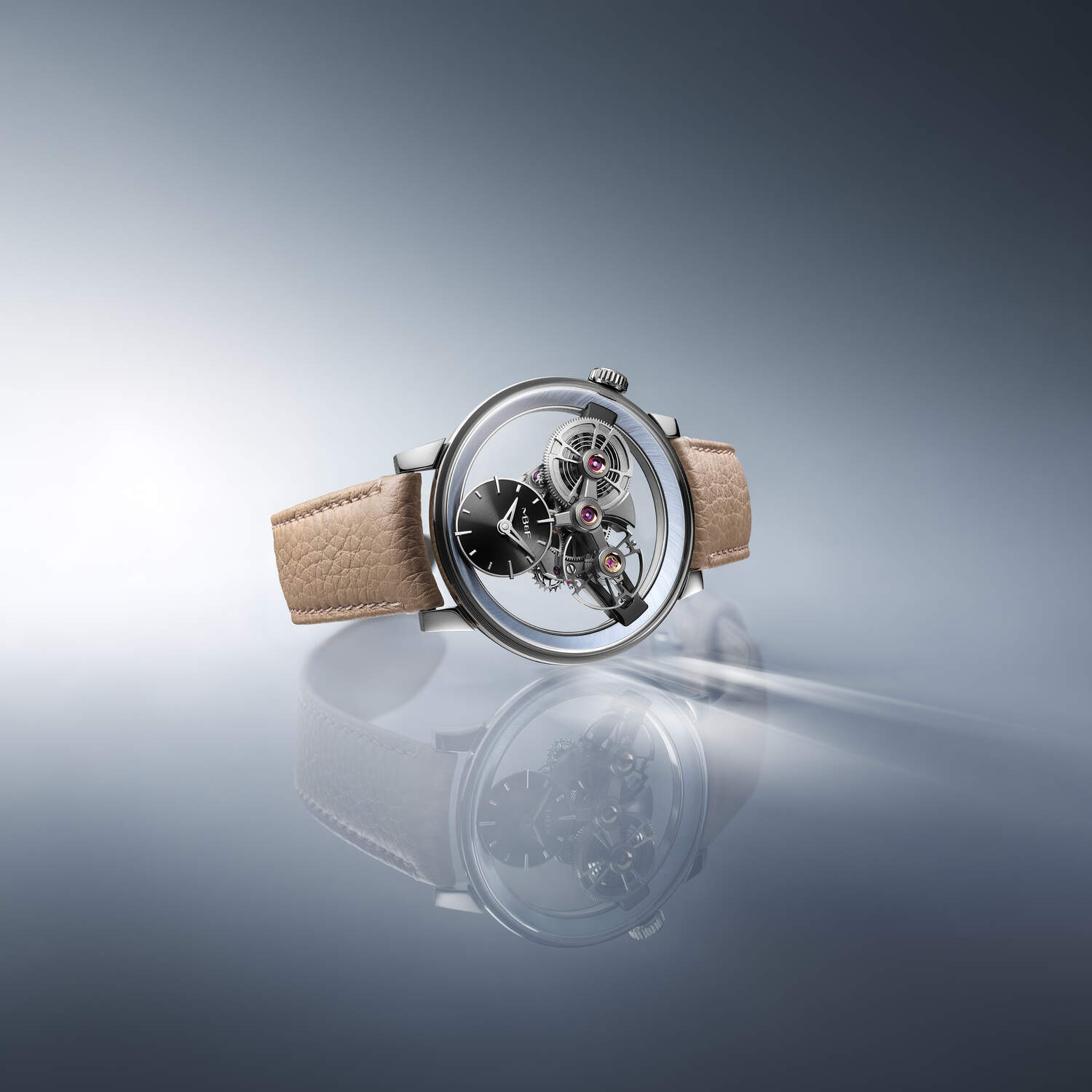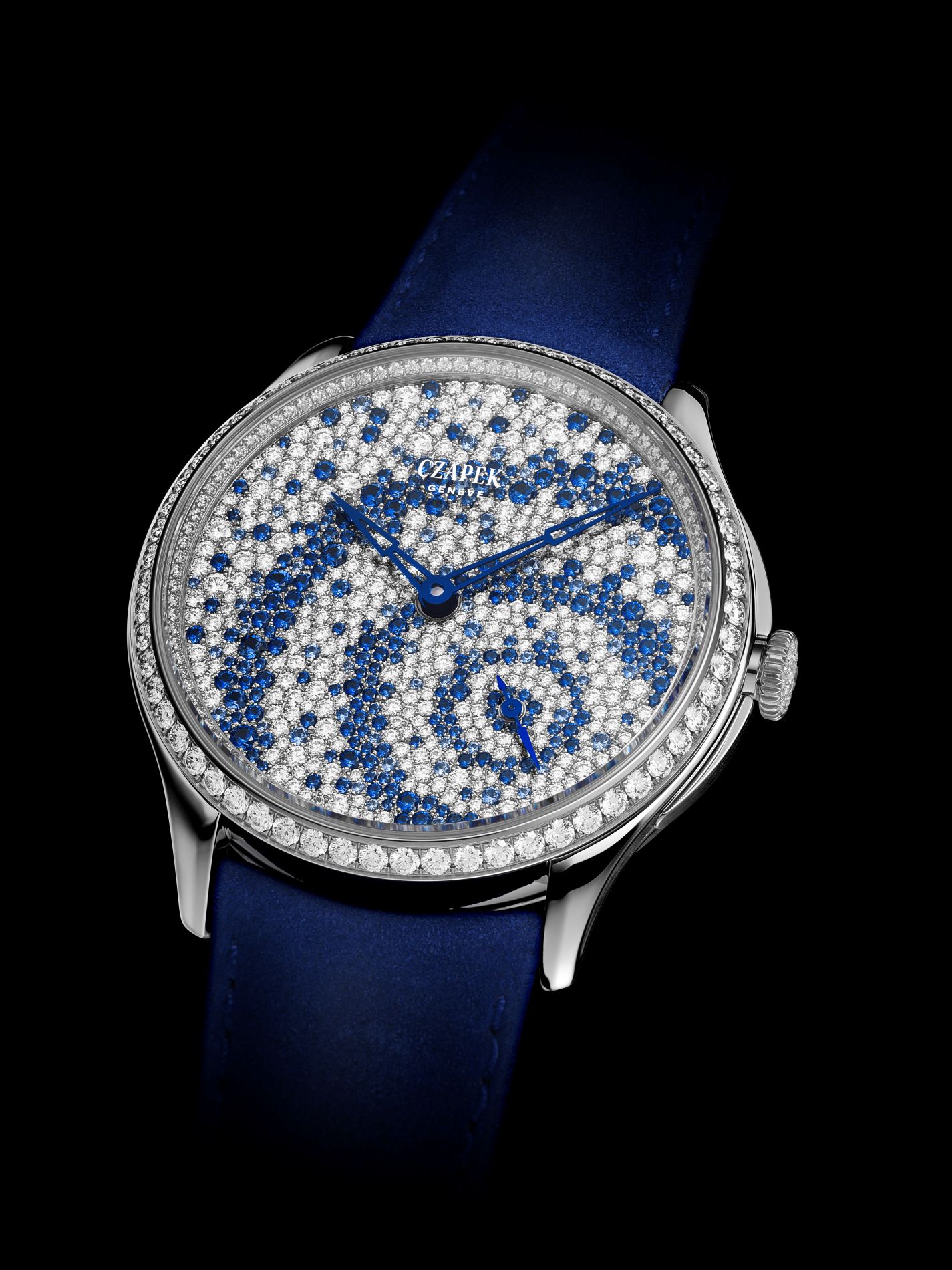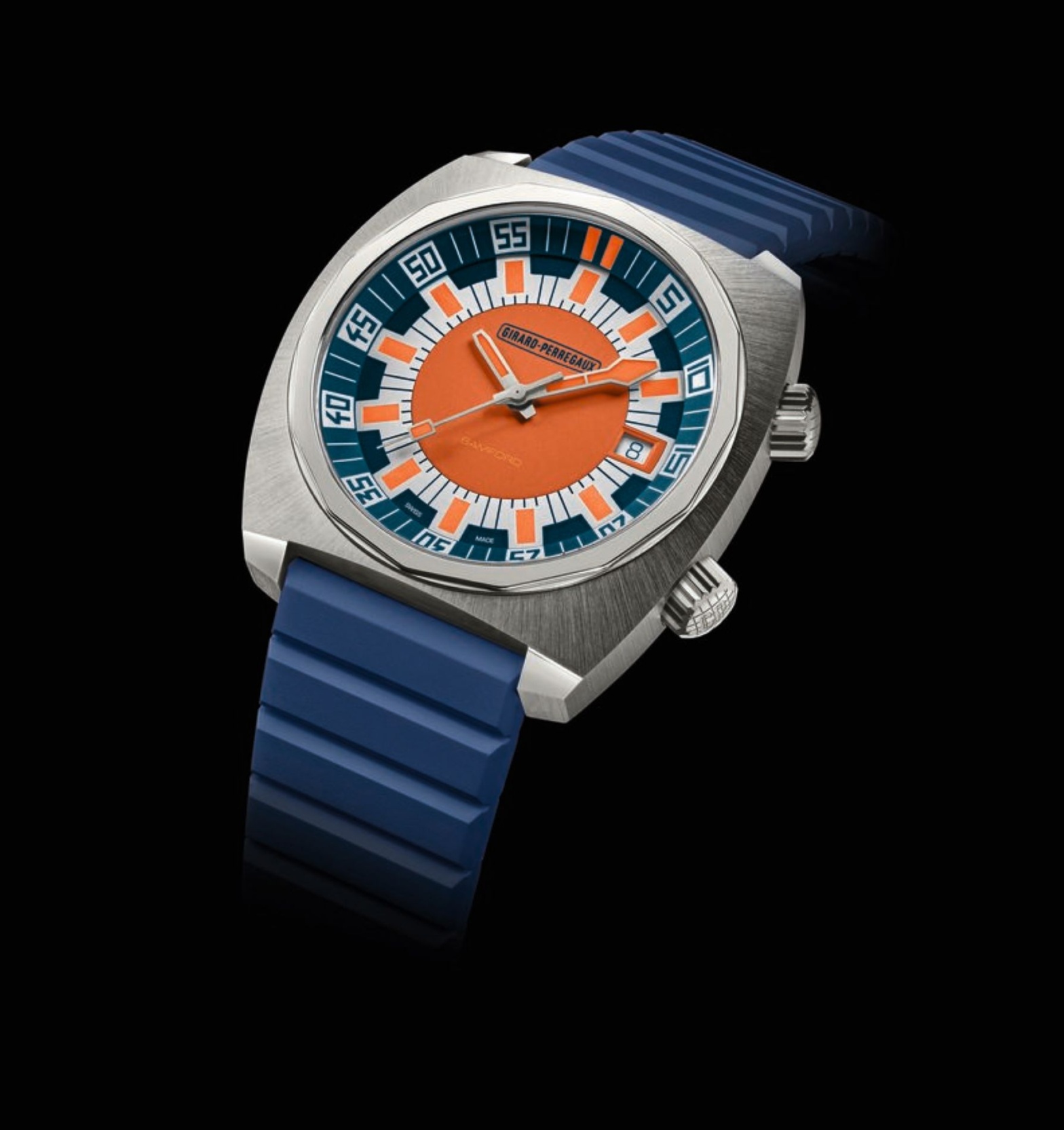Le Brassus, March 2024 – Furthering its material exploration, Swiss Haute Horlogerie manufacturer Audemars Piguet is delighted to introduce its very first timepiece crafted in sand gold, a new 18-carat gold alloy conferring rich plays of light. Hovering between white and pink gold, its colour changes depending on the angle and light, thus offering varied aesthetic possibilities. The Manufacture premieres this precious metal with the launch of a new Royal Oak Selfwinding Flying Tourbillon Openworked in 41 mm. To complement the new gold case and bracelet, Audemars Piguet developed a matching sand-gold-toned hue to adorn the openworked bridges and mainplate of Calibre 2972, whose multilayered architecture takes centre stage on both sides of the watch. This new galvanic colour sits in subtle contrast with the rhodium-toned components of the movement’s inner workings to create a unique 3D effect. The result is a harmonious scene blending technical complexity with contemporary design.

A NEW SHADE OF GOLD
The new 41 mm Royal Oak Selfwinding Flying Tourbillon Openworked premieres the use of sand gold at Audemars Piguet. This 18-carat gold alloy, named after sand dunes in the sunlight, combines gold with copper and palladium for a warm rendering. Wavering between white and pink gold, it offers subtle colour variations depending on the light. In addition, it provides resistance to discolouration over time, making it both a durable and timeless material.
The sand gold case and bracelet are finished with the Manufacture’s trademark alternation of satin brushing and polished chamfers. The large mirror-polished bevels of the octagonal bezel and the chamfers adorning every link and stud of the tapering bracelet accentuate the play of light conferred by this precious material.
To match the case and bracelet, the Manufacture has developed a sand-gold-toned hue, obtained through galvanic treatment, to adorn the inner bezel as well as the openworked bridges and mainplate of Calibre 2972, visible on both sides of the watch. The openworked components have been finished horizontally and vertically to accentuate the movement’s depth, while the brushed and polished angles enhance the play of light.
The sand-gold-toned bridges and mainplate are contrasted with touches of grey. The rhodium-toned barrel, geartrain and flying tourbillon at 6 o’clock are complemented by white gold hour-markers and hands, all filled with luminescent material. To give pride of place to the movement’s openworked architecture, the “Audemars Piguet” signature has been printed in black on the glareproofed sapphire crystal at 12 o’clock.
On the caseback side, the rhodium-toned 22-carat pink gold oscillating weight furthers the two-tone aesthetic of the openworked movement.

AN OPENWORKED MOVEMENT WITH A THREE-DIMENSIONAL ARCHITECTURE
First released in 2022 for the Royal Oak’s 50th anniversary, Calibre 2972 combines a selfwinding mechanism with a flying tourbillon. Its highly stylised and multilayered openworked architecture has been conceived to offer symmetry while bestowing the watch with a unique 3D effect.
This movement builds on the age-old openworking techniques that have been reshaping what is possible with wristwatch design since the 1930s. The beauty and finesse of the mechanism are revealed by removing as much material from the mainplate and bridges as possible to let light pass through, without impairing its functions. Leveraging advanced manufacturing technologies, the preliminary geometries of the mainplate and bridges have been cut through computer numerical control (CNC) machining, before being perfected by electric discharge machining (EDM). This manufacturing process enables the removal of small amounts of material with extreme precision to reach the desired shape.
The geometrical openworked bridges and mainplate have been decorated with horizontal and vertical hand-finishing, accentuating depth and play of light. In addition, the other movement components present refined Haute Horlogerie decorations including satin, circular and sunray brushing, snailing, as well as polished chamfers. The polished V-angles that can be admired on both sides of the watch reflect the meticulous handiwork that went into their realisation as this level of craftsmanship can only be achieved by hand.
A LEGACY OF GOLD WATCHES
 A noble metal par excellence, gold has been revered over time for its rarity, value, aesthetic quality, durability and technical properties. In addition to being resistant to corrosion, oxidation and discolouration, gold is a biocompatible and malleable material easier to work than other metals. Its softness and workability have made it ideal for the fabrication of jewellery, watches and other intricate decorative objects. Symbols of wealth and prestige, these gold creations have been decorated with artisanal techniques ranging from engraving and enamelling to gemsetting, among many others.
A noble metal par excellence, gold has been revered over time for its rarity, value, aesthetic quality, durability and technical properties. In addition to being resistant to corrosion, oxidation and discolouration, gold is a biocompatible and malleable material easier to work than other metals. Its softness and workability have made it ideal for the fabrication of jewellery, watches and other intricate decorative objects. Symbols of wealth and prestige, these gold creations have been decorated with artisanal techniques ranging from engraving and enamelling to gemsetting, among many others.
In jewellery and watchmaking, pure gold (24 carats) has often been combined with different metals such as copper, silver and palladium to create stronger and more resistant alloys, each endowed with its own colour, hardness and technical properties. As most players in the industry, Audemars Piguet principally works with 18-carat gold alloys when it comes to the external parts of its watches. With their composition (75% gold, 25% other metals), 18-carat gold alloys are more durable than pure gold, as the addition of metals makes them harder and more resistant to deformation. Yet, their high amount of gold confers them a deeper and richer colour than lower carat alloys. Note, however, that before the 1950s, alloys were defined more freely, leading to great variation in terms of composition and colour. In other words, two 18-carat “yellow gold” watches often did not have the same yellow hue. The increasing need to reach uniformity across the watchmaking sector led the “Normes Industrielles de l’Horlogerie Suisse” to establish composition standards in 1966 for 18-carat gold alloys, which stabilised their colours in turn.
Gold alloys, in all their creative variations, have played an important role at Audemars Piguet since the inception of the company. Out of the 567 complicated wristwatches that were cased-up and delivered by the Manufacture between 1882 and 1969, 432 were made in gold (248 in yellow gold, 68 in white gold, 41 in pink gold, 32 in green gold and 43 with no N-specified colour).
In the 1970s, at a time when yellow gold still dominated the world of luxury watches, Audemars Piguet started experimenting with stainless steel, a more contemporary material, to anticipate changing and more active lifestyles. The Royal Oak (Model 5402) released in 1972 marked a turning point for the Haute Horlogerie industry, its body of hand-finished stainless steel and exuberant price tag placing it on the par with gold watches. Gold models came to complement the original steel timepiece four years after its launch and contributed to establishing the Royal Oak as a collection.
The first Royal Oak model to incorporate gold was the Royal Oak II (Model 8638), the 29 mm women’s version designed by Jacqueline Dimier, which was first released in stainless steel in 1976. A year later, this timepiece was reinterpreted in a two-tone design combining yellow gold with stainless steel and in a full yellow gold version, followed in 1978 by a very limited white gold iteration. In 1977, the Manufacture also released its first 39 mm 5402 Royal Oak models in yellow gold, white gold and in a two-tone combination, as well as a new 35 mm intermediate size, Model 4100, available in steel, yellow gold and two-tone. From 1979, nearly three-quarters of the Royal Oak watches were partially or entirely made of gold—a precious material that has remained a staple of the collection to this day even when the price of gold soared in the 1980s.
Less common at the time, pink gold appeared in the Royal Oak collection in the mid-1980s and slowly gained ground across the Manufacture’s collections. In the 2000s, the demand for yellow gold watches faded in favour of models in pink gold, whose subtle, yet warm hues conquered the hearts. Today, pink, white and yellow gold are commonly used throughout the watchmaking industry, alongside other proprietary 18-carat alloys, including Everose Gold (Rolex), Sedna Gold and Moonshine™ Gold (Omega), King Gold and Magic Gold (Hublot) as well as Hard Gold (IWC).
The new Royal Oak Selfwinding Flying Tourbillon Openworked in sand gold builds on this longstanding legacy of gold watches while continuing Audemars Piguet’s material exploration and diversification. Coming alive in the light thanks to the alloy’s ever-changing colour, it offers new aesthetic possibilities merging contemporary design with endless elegance.
“With sand gold, Audemars Piguet is reviving the creative approach to gold alloys and colours that prevailed for thousands of years until the 1960s.”
Sébastian Vivas
Heritage and Museum Director, Audemars Piguet









